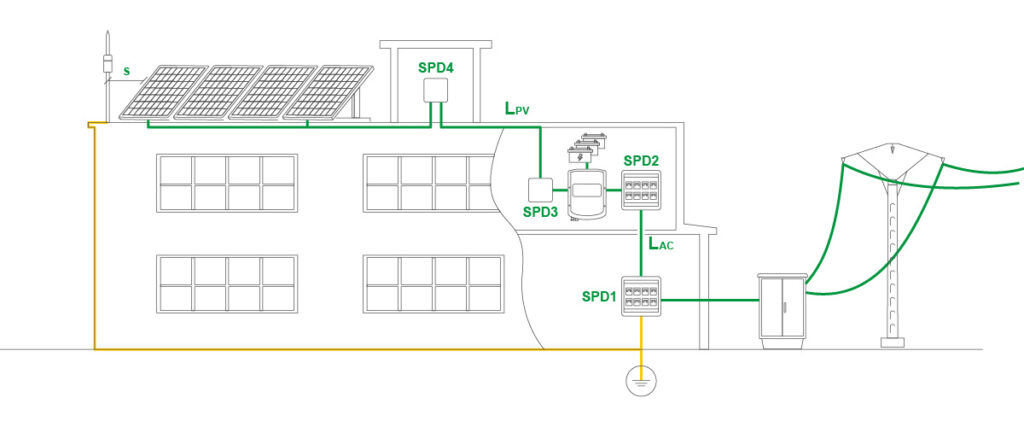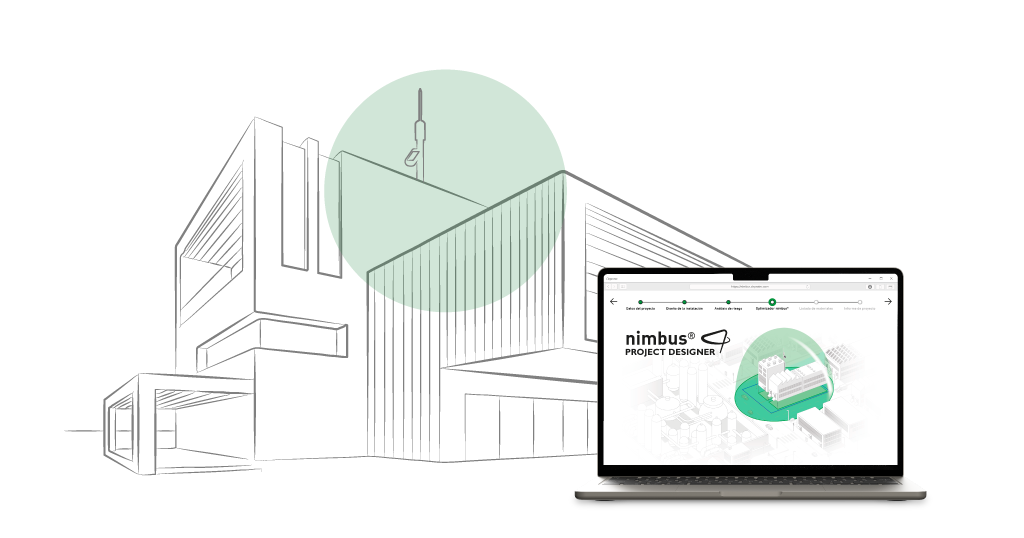Photovoltaic and Storage
Photovoltaic self consumption
Why protect a photovoltaic installation in buildings against overvoltages?
Photovoltaic (PV) installations in buildings are located on roofs, façades or other building structures. They may be domestic installations, intended for residential buildings, or industrial, designed to meet the energy needs of commercial buildings or industries.
Due to their atmospheric exposure, these systems are more susceptible to damage associated with the effects of lightning. To prevent such damage and subsequent financial and personal losses, lightning and overvoltage protection measures should be considered during the design phase.
Implementing this protection requires taking into account not only the general regulations for installing photovoltaic systems (IEC 60364-7-712), but also the instructions for selecting and installing SPDs (IEC 61643-32), on both the DC and AC sides.
The following aspects are relevant for the correct design and installation of SPDs in these systems:
- Characteristic data of supply systems, such as network configuration, nominal voltage and short-circuit current.
- Lightning protection class (LPL) required.
- Presence of an external lightning protection system and the number of external downpipe conductors.
- Clearance(s) to be maintained.
- Location of the inverter and cable lengths between the devices to be protected.
What may be needed for our installation?
We can differentiate two types of installation which determine the type of protection to be used: buildings with external lightning protection and buildings without such a system (SPCR).

Self consumption | ||||
|---|---|---|---|---|
Configuration | PV in Building with SPCR | PV in Building without SPCR | ||
LAC | >10 m | <10m | >10 m | <10m |
LPV | >10 m | >10 m | >10 m | <10m |
SPD1 | AC Type 1+2 | AC Type 1+2 | AC Type 2 | AC Type 2 |
SPD2 | AC Type 1+2* | Not required | AC Type 2 | Not required |
SPD3 | PV Type 1+2* | PV Type 2* | PV Type 2 | PV Type 2 |
SPD4 | PV Type 1+2* | Not required | PV Type 2 | Not required |
(*) It is sufficient to install type T2 protectors if the clearance(s) is(are) maintained, according to IEC/EN 62305-3, between all cables and elements of the PV system with all parts of the lightning protection system.
Surge protectors should be installed as close as possible to the equipment to be protected. When the distance between the modules and the inverter (LPV) and/or between the inverter and the main distribution board (LAC) exceeds 10 m, it is necessary to install an additional protector.
Self consumption | ||||
|---|---|---|---|---|
Type | PV | AC | ||
Type 1+2 | PSC YPV | PSC 12,5 | ||
Type 2 | PSM YPV | PSM 40 | ||

DIN RAIL – IEC TIPO 1+2 PV
PSC YPV
Protectors with Iimp (10/350): 5 kA. YPV. Pluggable format
Surge

DIN RAIL – IEC TYPE 1+2
PSC 12.5
Protectors with Iimp (10/350): 12.5 kA. Pluggable format
Surge

DIN RAIL – IEC TYPE 2 PV
PSM YPV
Protector with Imax (8/20): 40 kA YPV. Pluggable format.
Surge

DIN RAIL – IEC TYPE 2
PSM 40
Protector with Imax (8/20): 40 kA In: 20kA. Pluggable format.
Surge

nimbus® Project Designer
The complete protection solution for each application may require an LPS (Lightning Protection System). Our software is free and allows you to do the risk analysis and solve the geometric project with your bill of materials.